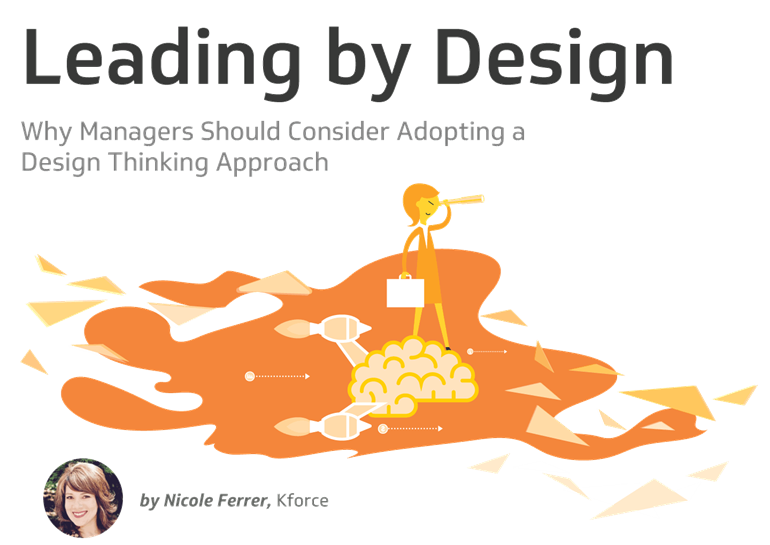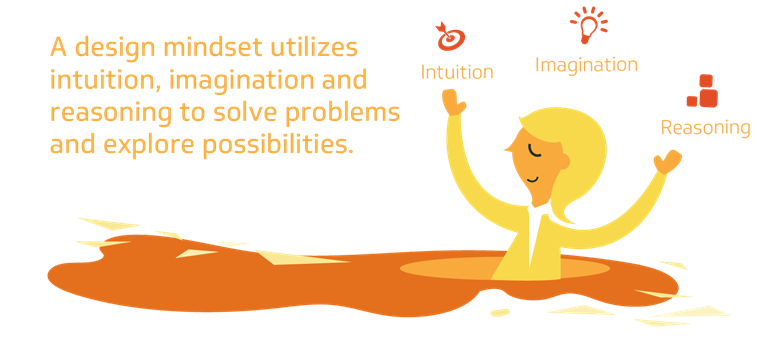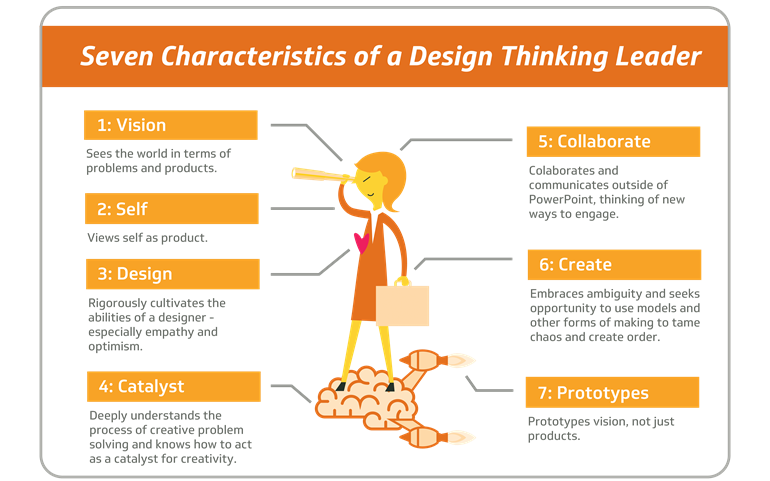
PUBLISHED MARCH 16, 2017
Learn How to Hone Your Leadership Skills with Design Thinking
Are you a manager? If so, you probably seek ways to improve your leadership skills – and as with any skill, you have the opportunity to practice and improve. Like an artist designs an illustration, you design the way you lead, manage and inspire your team.
Managers, I believe if you adopt design thinking concepts, you successfully engage your employees and empower them to accomplish great things.
Jeanne Meister explains how design thinking can shape the employee experience this way:
“At its core, design thinking focuses on creating an employee experience that is intuitive, engaging, and mirrors a consumer experience.”
Nowadays, managers in all types of industries and fields are looking to design thinking as they hone their leadership skills. They want to learn how to think like creators and apply principles of creative design to the workplace.
Companies need happy, engaged employees to thrive. When your employees are engaged, they tend to stay at your company a lot longer than disengaged, unhappy employees do. Ask any talent acquisition or HR executive about her top concerns, and she will likely say “retention.”
Voluntary turnover packs a nasty punch – including a direct hit on company revenue. A CAP study found average costs to replace an employee are:
- 16% of annual salary for high-turnover, low-paying jobs (earning under $30,000 a year)
- 20% of annual salary for mid-range positions (earning $30,000 to $50,000 a year)
- Up to 213% of annual salary for highly educated executive positions
In addition, voluntary turnover includes additional consequences, such as lost productivity (it may take a new employee 1-2 years to reach the productivity of an existing person), poor customer service and errors (new employees tend to take longer and are often less adept at solving problems), and the cost to train a new employee.
It’s important for us to do all we can to retain top talent – and I believe design thinking has quite a lot to offer.

What I love about design thinking leadership is that it prioritizes the employee experience and pushes us to create processes focused on the worker. Design thinking leaders:
- Are lifelong learners who do not claim to have all of the right answers.
- Are highly collaborative, and develop their team through group discussions around concepts and shared goals.
- Consider the end user, their employees, as the focal point of every decision.
- Have a deep desire to understand, empathize, and create technologies, services, and products that match the needs and demands of their employees.

I consider Design Thinking leaders as the 'master of ceremonies' or the conductors of an orchestra."
They are the creative forces who develop systems and services that enable the growth of not only their teams, but the entire organization.
It is in this keenly focused and collaborative effort that we witness a constant loop of feedback, experiments to test viability, and continuous product development.
Though the Design Thinking leader is responsible for providing clarity and purpose, it is done in a way that is not coercive. This is a drastic shift from more traditional management styles, in which guidance comes from a higher authority who solely defines goals and controls all activities without any meaningful participation of their subordinates.

From team policies and procedures to the way meetings are conducted, the end user is first and foremost and their needs take priority over other consideration. I believe this makes perfect sense when you consider how critical employees are to a company who embraces Design Thinking.
Employees’ unique perspectives shape the lenses through which we see the world. Employees draw on their experiences to shape a collective of knowledge, and we end up with a multifaceted perspective that informs the creative process – a place we might not have arrived at on our own.
With this type of comprehensive consideration, we are able to improve the way we all operate as team members and leaders. When we incorporate this collaborative approach, we have the opportunity to improve our products – and more importantly, the lives of our employees.
So how can you become a design thinking leader? Jonathan Lewis explains the top qualities of a design thinking leader in his article, and I’ve recapped them below. Hopefully they will help you apply design thinking to your leadership style, just as it has helped me.

